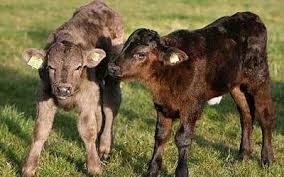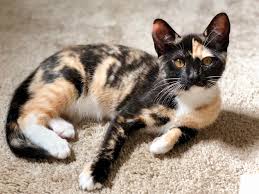*Sigh* Of course I can’t because clown fish can’t talk. Even if they could, I’m not sure they could tell me much about human reproductive biology, let alone gender identity.
That’s not to say clown fish reproductive biology isn’t fascinating, of course it is. Clown fish are sequential hermaphrodites. This means they develop as males first, then become females when they mature (insert joke here). In groups of clown fish, there is a strict hierarchy, with the largest and most aggressive female at the top. If the female dies, or is removed from the group for another reason, then one of the largest and most dominant males becomes female and all the other fish move one place up the pecking order. Contrary to popular belief, this means that the term hermaphrodite here does not contradict the existence of only two sexes. There’s no ambiguity as to which sex a clown fish is. And do you know how they can tell? The female produces large gametes, the male produces small gametes. Isn’t reproductive biology amazing?
As I say, not that this tells us much about human reproductive biology though. Human’s aren’t sequential hermaphrodites.
I’m sure some bright spark will be ready to jump into the comments with “what about güevedoces?”, so let’s get that out of the way. Güevedoces is a term used for children in the Dominican Republic with 5α-Reductase deficiency (5-ARD). Babies born with 5-ARD are genetic males (5α-Reductase has no known role in XX development), who are unable to convert testosterone to dihydrotestosterone (DHT). As DHT is required to masculanise the genitalia in utero, the baby’s genitalia can appear either phenotypically female, phenotypically male or may be ambiguous in appearance. Of these three, female is the most common, therefore many babies with 5-ARD are recorded as female at birth. In these cases, the condition is not usually diagnosed until later in life when the child doesn’t start their period. The boost of testosterone during puberty can cause the genitals to masculinise, meaning the testicles may descend and the penis grow. It’s an extremely rare condition, so rare that there are no estimates available for its frequency among the population.
That being said, and the reason we’re talking about this, there are parts of the world where 5-ARD is more common than others, the Dominican Republic being one of them, hence they have the word güevedoces. To give you an example, there was a tiny, remote village, called Las Salinas, where 12 out of 13 families had one or more male family members that were carriers of 5-ARD, although not all carriers were affected. The overall incidence for the village was 1 in every 90 males were affected carriers, with the remainder of males being either non-carriers or non-affected carriers. It’s been suggested that founder effect or bottleneck effect (as in, the villagers are interrelated and may have inherited it from the same individual), in conjunction with a lack of genes from outsiders, due to the isolated geographic location of Las Salinas, allowed the condition to become amplified in the village.
The term güevedoces is a contraction in the local dialect of the phrase “huevos a los doce”. Huevo or güevo literally means egg, but is also slang for testicles, so the meaning is “testicles at age twelve”. In the Dominican Republic, güevedoces grow up to be fully functioning males in society. In other countries, where the condition is less prevalent, girls may instead decide to have the testes removed to prevent masculanisation. This is a really personal decision, and I’m placing no judgement either way here, as long as the actual person is involved in the decision making. I do think it’s an important lesson in not treating all people with DSDs as a monolith and understanding how playing around with statistics about frequency can mask the reality of people’s situations though.
Anyway, back to the clown fish. I’ve got some more big news for you…not only are they not not male or female, they are also not intersex. Here’s the thing, and this is the reason I really wanted to write this post, intersex is about *differences* in reproductive development. What clown fish do, when they switch from male to female, is quite usual for their species. It’s what needs to happen for reproduction to occur. When we’re talking about intersex, we’re talking about something that happens unexpectedly in someone’s reproductive development. The word was first coined, in fact, not to describe clown fish, or even humans, but to describe differences of sex development observed among other animals. I’ll give you an example…

Meet the freemartin. Freemartins are masculanised, infertile female calves. Genetically they are chimeric, meaning their Karyotype is XX/XY. The animal originates as a female (XX), but acquires the male (XY) component in utero from a male twin. Externally, the animal appears female, but various aspects of female reproductive development are altered due to acquisition of anti-Müllerian hormone from their male twin. Freemartinism is a common outcome of mixed-sex twins in all cattle species that have been studied. It also occurs occasionally in other mammals including sheep, goats, and pigs.
Let me reiterate a couple of points here, freemartinism only occurs in females when that female is one of a pair of mixed sex twins. This causes a difference in the calf’s reproductive development, that would not be expected in a typical female. This is what intersex means, a difference in the reproductive development of one or other sex in a species where that difference is atypical. Let me give you another example, as we’re on the subject of animals…
Meet the male calico cat. He has Klinefelter syndrome. How do I know? All male calico cats have Klinefelters.

Calico isn’t a breed of cat, it describes their colouring. See how the calico has three colours, black orange and white? This is only possible if the cat has two X chromosomes to convey that genetic information. This is because the genes that determine either orange or black are carried on the X chromosome. Females, therefore, with two x chromosomes, can be orange (if they inherit two orange Xs), black (if they inherit two black Xs) or a combination of both (if they inherit both an orange X and a black X). Males, with only one X chromosome can only inherit one colour, either a black X or an orange X. In male cats, the orange colour is usually expressed as orange with white stripes, what we call ginger toms. If, however, the male cat has XXY chromosomes, Klinefelters Syndrome, then he can also inherit both orange and black from his two X chromosomes.
If I was going to pick an animal to represent DSDs, for me, hands down, it’d be the calico cat, not non-related clown fish. How do we know that all male calico cats have Klinefelters, if we don’t know what sex cats with XXY chromosomes are, or if they exist on some vague spectrum? None of this, of course, advances any discussions about the merits of organising society based on believing what people tell us they want us to believe about themselves, rather than something we can objectively observe, and are generally not confused about, even if we randomly throw clown fish into the mix.

Miss you on YouTube and Twitter Claire. 💕 Much of my info regarding intersex conditions is from you and much appreciated.
Thanks, Carol. I miss Twitter too at times, tbf. I’m glad my writing is still helping people though 💜
Thanks for this great explanation. ❤
Thank you! 💜
This is the sort of invaluable information I miss most from my social media retirement, thanks Claire, excellent as usual